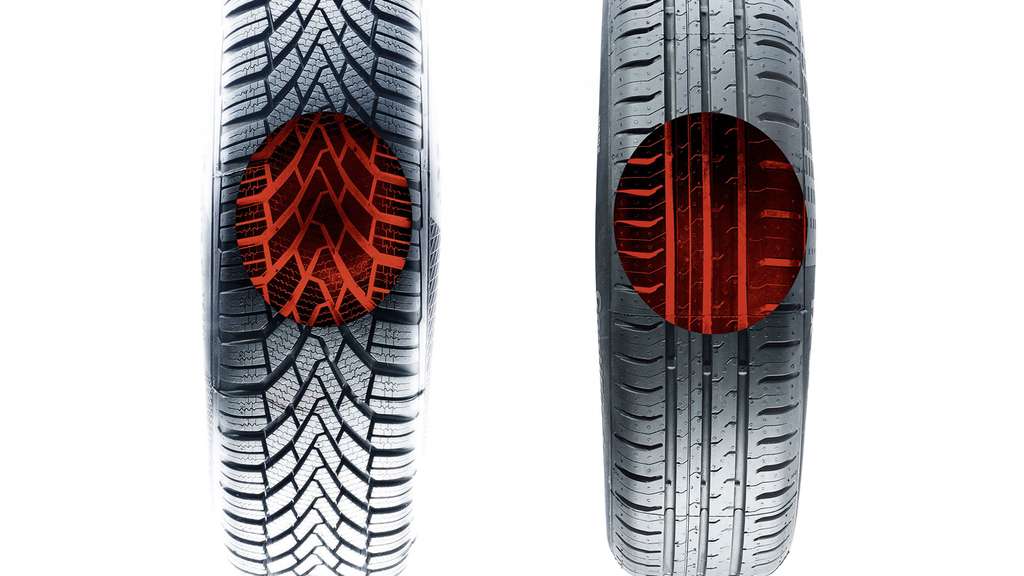
Winter tires and summer tires - what is the difference between them and when should you decide to replace them?
Content
Although not visible at first glance, winter tires and summer tires are quite different from each other. The former provide better traction in more difficult weather conditions, such as on roads covered with snow and ice. This directly affects the safety of the driver and other road users, which should be of key importance for everyone. However, despite the numerous advantages of replacing summer tires with winter ones, not all drivers decide to do so. What you need to know about using summer and winter tires?
Tire replacement in our country - what does the law say?
In many European countries, driving on winter tires in cold weather is strictly regulated by law. This is the case in particular in countries such as Sweden, Romania, Latvia, Lithuania and Finland. In our country there is no law or requirement that would be determined by traffic rules. However, many safety experts strongly recommend seasonal tire changes.
Winter tires and summer tires - when to change?
When should you change summer tires to winter tires? In our country, each driver decides about this individually. Undoubtedly, this is also influenced by weather conditions, which in recent years can be very changeable. However, it is considered worthwhile to do this when average temperatures fall below 7 ° C and stay at this level for a long time. Why should such a temperature be decisive for drivers? Because below 7 degrees the rubber compounds of summer tires change and lose their usefulness. In most European countries, it is recommended to change summer tires to winter tires in late November or early December.
Winter tires and summer tires - what's the difference?
Winter tires and summer tires - what is the difference between them? They differ, among other things, in tire tread. In winter, it is densely covered with lamellas, thanks to which it can easily bite into thick snow on the road. That is why you can see the Alpine symbol and the m + s marking on them, which means “mud and snow” in English.
The tread of a winter tire makes it stand out with its excellent grip on snowy or muddy roads, providing the driver and other road users with both safety and increased driving comfort. On the other hand, the tread pattern of summer tires has a much smaller number of sipes, which provides a larger contact area with the road surface and thus ensures higher speed.
Other tire differences
However, the tread pattern is not the only difference between these two tire types. They are made from a different rubber compound, which is directly related to the weather conditions outside. Winter tires contain much more organosilicon impurities and polymer additives, which gives them flexibility even at low temperatures. On the other hand, summer tires harden in winter, which reduces their grip on the road and negatively affects driving comfort.
In addition, soft winter compounds wear out very quickly when driving on warm asphalt and have higher rolling resistance - so it is worth replacing them, guided not only by safety, but also by economy.
Braking distances
As you can see, summer tires are stiffer and have less tread than winter tires. How does this affect driver safety? Although they provide safe and comfortable driving in summer, they are no longer able to guarantee the right level of traction in winter - braking distances are especially affected. Numerous studies show that winter tires can shorten it by several tens of meters - the difference is felt both on wet asphalt and on snow. In the latter case, winter tires are able to stop the car 31 meters earlier than summer tires. No wonder conscious drivers decide to change them periodically!
Aquaplaning - what is it?
The phenomenon of hydroplaning is nothing more than the loss of traction when driving on a wet surface, such as puddles. This is caused by the formation of a layer of water between the road and the wheels and presents a direct risk of skidding. How to prevent it? First of all, in more difficult weather conditions, drive on quality tires with a deep tread.
All season tires
Winter tires and summer tires - wondering what to choose? Some drivers compromise and decide to equip the car with another type of tire - all-weather tires that work well both on dry and wet surfaces. This is a good decision? If you're looking to save money, prefer a relaxed driving style, and rarely travel out of town, they can be a hit!
It is worth focusing on high-quality tires and regularly check their condition, because, due to their specificity, they allow you to drive less kilometers.
